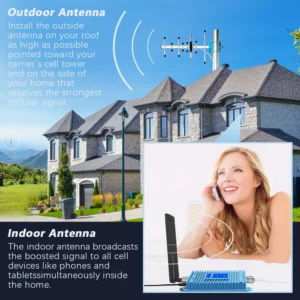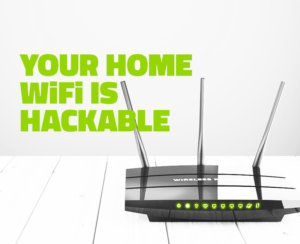The Evolution of 5G Technology and its Implications for Connectivity
admin February 26, 2024 0
The evolution of 5G technology has been transformative, promising faster speeds, lower latency, and greater connectivity than ever before. Here’s a breakdown of its evolution and its implications for connectivity:
- Speed and Bandwidth: 5G offers significantly faster speeds compared to its predecessors (4G, 3G, etc.). Initially, 5G started with non-standalone (NSA) architecture, which relied on existing 4G infrastructure for certain functions. However, as the technology matures, standalone (SA) 5G networks have been deployed, offering even greater speeds and bandwidth.
- Low Latency: One of the most significant advantages of 5G is its ultra-low latency, which enables near real-time communication. This is crucial for applications like autonomous vehicles, remote surgery, and augmented reality, where even milliseconds of delay can be critical.
- Massive IoT Connectivity: 5G is designed to support a massive number of connected devices simultaneously, making it ideal for the Internet of Things (IoT) ecosystem. This enables the proliferation of smart devices in various domains, including smart cities, healthcare, agriculture, and manufacturing.
- Enhanced Mobile Broadband (eMBB): 5G offers enhanced mobile broadband capabilities, enabling seamless streaming of high-definition video, virtual reality experiences, and other bandwidth-intensive applications. This ensures a smoother and more immersive user experience for consumers.
- Network Slicing: With 5G, networks can be sliced into virtual segments to cater to specific applications’ needs. This allows for better optimization of resources and customization of services based on requirements, leading to improved efficiency and performance.
- Edge Computing: 5G networks facilitate edge computing by bringing computational resources closer to end-users and devices. This reduces latency and bandwidth usage by processing data locally, enabling applications that require real-time responses and reducing reliance on centralized cloud infrastructure.
- Industry 4.0 and Digital Transformation: 5G is a cornerstone technology for Industry 4.0, enabling the digital transformation of industries through automation, robotics, artificial intelligence, and data analytics. It enhances productivity, efficiency, and innovation across various sectors.
- Ubiquitous Connectivity: 5G aims to provide ubiquitous connectivity, bridging the digital divide by extending high-speed internet access to underserved and remote areas. This fosters economic development, social inclusion, and equal opportunities for all.
- Security and Privacy Challenges: As connectivity increases, so do security and privacy concerns. With a greater number of connected devices and data transmission, there’s a heightened risk of cyber attacks, data breaches, and privacy violations. Addressing these challenges is crucial to ensuring the trust and reliability of 5G networks.
Overall, the evolution of 5G technology holds tremendous promise for transforming connectivity across various domains, revolutionizing industries, and enhancing the way we live, work, and communicate. However, realizing its full potential requires addressing technical, regulatory, and societal challenges while ensuring equitable access and safeguarding security and privacy.
Speed and Bandwidth
The evolution of 5G technology has brought significant improvements in speed and bandwidth, revolutionizing connectivity in several ways:
- Increased Speed: 5G offers dramatically faster download and upload speeds compared to previous generations of mobile networks. While 4G LTE networks typically offer speeds in the range of tens to hundreds of megabits per second (Mbps), 5G promises to deliver multi-gigabit per second (Gbps) speeds. This enables users to download large files, stream high-definition videos, and engage in bandwidth-intensive activities with minimal latency.
- Enhanced Capacity: 5G networks have the capacity to support a much larger number of devices simultaneously compared to 4G networks. This is achieved through advanced technologies such as massive multiple-input multiple-output (MIMO) antennas and beamforming, which enable more efficient use of available spectrum and reduce interference, resulting in improved network capacity and overall performance.
- Low Latency: In addition to faster speeds, 5G also offers significantly lower latency, or the time it takes for data to travel between a user’s device and the network. While 4G networks typically have latency in the range of tens of milliseconds, 5G aims to achieve latency as low as a few milliseconds. This near real-time responsiveness is critical for applications such as online gaming, virtual reality, and autonomous vehicles, where even small delays can be noticeable or impactful.
- High Bandwidth: 5G utilizes a broader range of frequencies, including both lower frequencies (sub-6 GHz) and higher frequencies (mmWave), to deliver higher bandwidth and capacity. Lower frequency bands provide wider coverage and better penetration through obstacles, making them suitable for providing broad-area coverage, while higher frequency bands offer significantly higher data rates but with shorter range and limited penetration. By leveraging a combination of these frequency bands, 5G networks can deliver high bandwidth and capacity across diverse use cases and deployment scenarios.
- Multi-Access Edge Computing (MEC): 5G networks are also designed to support edge computing capabilities, bringing computational resources closer to end-users and devices. This allows for low-latency processing of data at the network edge, reducing the need to transmit large amounts of data to centralized data centers for processing. By offloading computation and storage tasks to edge servers, 5G networks can further improve responsiveness and efficiency, enabling a wide range of latency-sensitive applications.
Overall, the advancements in speed and bandwidth enabled by 5G technology have the potential to revolutionize various industries and applications, including augmented reality, virtual reality, telemedicine, autonomous vehicles, and smart cities, among others. As 5G continues to roll out and evolve, it will play a central role in driving innovation, economic growth, and societal transformation in the years to come.
Low Latency
Low latency is one of the key features and promises of 5G technology, and it refers to the minimized delay or lag time between the sending and receiving of data over a network. Here’s a closer look at low latency in the context of 5G:
- Real-time Communication: Low latency enables real-time communication and interaction between devices and applications. In scenarios like video calls, online gaming, and live streaming, even milliseconds of delay can impact user experience significantly. With 5G’s low latency capabilities, these applications can function seamlessly, providing a more immersive and responsive user experience.
- Critical Applications: Beyond consumer applications, low latency is essential for critical applications such as autonomous vehicles, remote surgery, industrial automation, and smart grids. In these scenarios, split-second decisions and responses are crucial for safety, efficiency, and effectiveness. 5G’s low latency ensures that these applications can operate reliably and safely in real-world environments.
- Edge Computing: 5G networks leverage edge computing to reduce latency by processing data closer to the point of generation or consumption. By deploying computing resources at the network edge, data can be processed and acted upon locally, minimizing the need to transmit it back and forth to centralized data centers. This edge-centric architecture further reduces latency for latency-sensitive applications.
- Network Slicing: 5G introduces the concept of network slicing, which allows operators to create virtual network segments tailored to specific use cases or applications. By allocating dedicated resources and optimizing network parameters for each slice, operators can ensure low latency for specific applications or services, even in shared network environments.
- Ultra-Reliable Low Latency Communication (URLLC): 5G includes a feature called URLLC, which is designed to provide ultra-reliable communication with very low latency. URLLC is particularly important for mission-critical applications where reliability and low latency are paramount, such as industrial automation, emergency response systems, and remote control of machinery.
- Future Applications: Low latency opens up possibilities for innovative applications and services that were previously impractical or impossible. These may include immersive augmented reality experiences, real-time analytics for financial trading, interactive remote education, and collaborative virtual environments. As 5G networks continue to evolve, new low-latency applications are expected to emerge, driving further innovation and disruption across industries.
Overall, low latency is a critical enabler of the transformative potential of 5G technology, unlocking new use cases, improving user experiences, and driving innovation across various sectors. As 5G deployments expand and mature, low latency will continue to play a central role in shaping the future of connectivity and digital transformation.
Massive IoT Connectivity
Massive IoT connectivity is one of the key promises of 5G technology, offering the ability to connect a massive number of devices and sensors simultaneously with high reliability, low latency, and efficient use of resources. Here’s how 5G enables massive IoT connectivity and its implications:
- Increased Capacity: 5G networks are designed to handle a significantly higher number of connected devices per square kilometer compared to previous generations. This is achieved through advanced technologies such as Narrowband IoT (NB-IoT) and Cat-M1 (LTE-M), which provide efficient use of spectrum and support for low-power, low-cost devices with long battery life. With 5G, operators can support tens of thousands of devices per cell, enabling large-scale IoT deployments in smart cities, industrial automation, agriculture, healthcare, and more.
- Extended Coverage: 5G networks offer extended coverage and improved penetration, making it possible to connect IoT devices in challenging environments such as underground facilities, remote areas, and indoor spaces. This is achieved through a combination of low-band, mid-band, and high-band spectrum, as well as advanced antenna technologies like beamforming and massive MIMO (Multiple Input Multiple Output), which enhance signal strength and coverage consistency.
- Low Latency: While traditional IoT deployments often experience latency due to reliance on centralized cloud services, 5G enables edge computing capabilities that bring computational resources closer to IoT devices. By processing data locally at the network edge, latency is reduced, enabling real-time or near real-time responsiveness for latency-sensitive IoT applications such as industrial automation, autonomous vehicles, and remote monitoring.
- Network Slicing: 5G introduces the concept of network slicing, which allows operators to create virtual network segments optimized for specific IoT use cases or industries. Each network slice can be tailored with different Quality of Service (QoS) parameters, security policies, and resource allocations to meet the unique requirements of IoT applications. This enables operators to offer specialized IoT services with guaranteed performance levels, ensuring reliability and scalability for diverse IoT deployments.
- Massive Scale: With the proliferation of IoT devices across various industries and domains, 5G enables massive scale deployments with millions or even billions of connected devices. This includes smart meters, environmental sensors, industrial sensors, wearable devices, connected vehicles, and more. By providing a scalable and efficient connectivity platform, 5G accelerates the adoption of IoT technologies and drives digital transformation across sectors.
- Energy Efficiency: 5G technologies such as NB-IoT and Cat-M1 are designed to be highly energy-efficient, allowing IoT devices to operate on battery power for extended periods. This is essential for IoT applications deployed in remote or inaccessible locations where power sources may be limited or unavailable. By optimizing power consumption and implementing energy-saving features, 5G enables long-term, sustainable IoT deployments.
Overall, 5G technology unlocks the potential for massive IoT connectivity, enabling seamless integration of billions of devices into the global network ecosystem. This connectivity facilitates data-driven insights, automation, and innovation across industries, paving the way for smarter, more efficient, and more connected societies.
Enhanced Mobile Broadband (eMBB)
Enhanced Mobile Broadband (eMBB) is one of the primary pillars of 5G technology, focusing on delivering significantly faster data speeds, higher capacity, and improved user experiences compared to previous generations of mobile networks. Here’s a closer look at eMBB and its implications:
- Faster Speeds: eMBB aims to provide blazing-fast download and upload speeds, reaching multi-gigabit per second (Gbps) rates under optimal conditions. This enables users to download large files, stream high-definition videos, and engage in bandwidth-intensive activities with minimal latency. With 5G eMBB, users can experience smoother and more responsive mobile internet connectivity, transforming how they consume content and interact with online services.
- High Capacity: 5G eMBB networks offer significantly higher capacity compared to 4G LTE networks, allowing more users to connect simultaneously without experiencing congestion or degradation in service quality. This is achieved through advanced technologies such as massive Multiple Input Multiple Output (MIMO), beamforming, and carrier aggregation, which optimize spectral efficiency and network utilization. As a result, 5G eMBB networks can support a wide range of applications and services with varying bandwidth requirements, from basic web browsing to immersive virtual reality experiences.
- Improved Coverage: While initially deployed in urban areas and dense urban centers, 5G eMBB networks are gradually expanding to provide broader coverage across suburban and rural areas. This expansion is facilitated by a combination of low-band, mid-band, and high-band spectrum, which offer a balance between coverage, capacity, and speed. By leveraging spectrum in different frequency bands, operators can deploy 5G eMBB networks that provide consistent connectivity across diverse geographic regions and population densities.
- Enhanced User Experience: eMBB enhances the overall user experience by reducing latency, increasing reliability, and enabling seamless connectivity across devices and applications. With 5G eMBB, users can enjoy smoother video streaming, faster web browsing, and more responsive online gaming. Moreover, applications that rely on real-time communication, such as video calls, voice over IP (VoIP), and augmented reality (AR), benefit from the low latency and high throughput of 5G eMBB networks, enabling more immersive and interactive experiences.
- Innovative Services: The high-speed, low-latency capabilities of 5G eMBB unlock new possibilities for innovative services and applications across industries. These may include immersive media experiences, such as ultra-high-definition video streaming and virtual reality gaming, as well as enterprise applications like cloud-based productivity tools, remote collaboration platforms, and Internet of Things (IoT) solutions. By leveraging the performance and flexibility of 5G eMBB networks, service providers can differentiate themselves in the market and deliver value-added services that meet the evolving needs of consumers and businesses.
Overall, Enhanced Mobile Broadband (eMBB) is a key enabler of 5G technology, offering significantly faster speeds, higher capacity, and improved user experiences compared to previous generations of mobile networks. With its enhanced capabilities, 5G eMBB paves the way for transformative applications and services that drive innovation, economic growth, and digital transformation across industries.
Network Slicing
Network slicing is a revolutionary feature of 5G technology that enables the creation of multiple virtual networks (slices) within a single physical 5G network infrastructure. Each network slice is tailored to meet specific requirements such as latency, bandwidth, reliability, and security, catering to diverse use cases and applications. Here’s a deeper dive into network slicing and its implications:
- Customization: Network slicing allows operators to customize network resources and parameters to meet the unique needs of different applications and services. For example, a slice dedicated to autonomous vehicles may prioritize low latency and high reliability, while a slice for augmented reality applications may prioritize high bandwidth and low latency. By tailoring network resources and performance characteristics for each slice, operators can ensure optimal user experiences and application performance.
- Resource Optimization: Network slicing enables efficient use of network resources by allocating them dynamically based on demand and application requirements. Instead of provisioning fixed resources for each service, operators can allocate resources dynamically to meet fluctuating demand and optimize resource utilization. This flexibility improves network efficiency, reduces operational costs, and enhances scalability, particularly in environments with diverse traffic patterns and usage profiles.
- Isolation and Security: Each network slice operates as a separate logical network with its own set of resources and security policies, providing isolation between different slices. This isolation enhances security by minimizing the attack surface and preventing security breaches from spreading across slices. Additionally, network slicing enables fine-grained control over security policies and access rights, allowing operators to enforce strict security measures based on the sensitivity of the data and the criticality of the application.
- Service Differentiation: Network slicing enables service providers to differentiate their offerings by tailoring network performance and service quality to meet specific customer requirements. For example, enterprise customers may require dedicated slices with guaranteed bandwidth, low latency, and high availability for mission-critical applications, while consumer customers may prioritize high-speed internet access and seamless connectivity for multimedia streaming and gaming. By offering customized slices with differentiated service levels, operators can address the diverse needs of their customer base and create new revenue streams.
- Multi-Tenancy and Monetization: Network slicing supports multi-tenancy by allowing multiple tenants (e.g., enterprises, vertical industries, virtual network operators) to share the same physical infrastructure while maintaining isolation between their respective slices. This enables operators to monetize their infrastructure assets by leasing network slices to third-party service providers, enterprises, and vertical industries. By offering network slicing as a service, operators can generate additional revenue streams and tap into new market segments beyond traditional consumer mobile services.
- Dynamic Orchestration: Network slicing requires dynamic orchestration and management of network resources to provision, configure, and optimize slices in real-time. This involves sophisticated software-defined networking (SDN) and network function virtualization (NFV) technologies that automate network operations and enable agile service delivery. Through dynamic orchestration, operators can respond rapidly to changing customer demands, application requirements, and network conditions, ensuring continuous optimization and adaptation of network slices.
Overall, network slicing is a transformative capability of 5G technology that enables operators to create customizable, secure, and differentiated network services tailored to the diverse needs of customers and applications. By leveraging network slicing, operators can unlock new opportunities for innovation, monetization, and value creation in the 5G era.
Edge Computing
Edge computing is a distributed computing paradigm that brings data processing closer to the edge of the network, near the data source or the end-user device, rather than relying on centralized data centers. Here’s a comprehensive look at edge computing and its implications:
- Reduced Latency: By processing data closer to where it is generated or consumed, edge computing minimizes the time it takes for data to travel across the network, resulting in lower latency. This is particularly important for latency-sensitive applications such as real-time analytics, augmented reality, virtual reality, and industrial automation, where even milliseconds of delay can impact performance and user experience significantly.
- Improved Responsiveness: Edge computing enables faster response times by enabling real-time or near-real-time processing of data at the network edge. This enables applications to react quickly to events, make time-critical decisions, and deliver timely responses to end-users. For example, in autonomous vehicles, edge computing enables onboard sensors and systems to analyze data and make driving decisions locally, without relying on remote servers or cloud infrastructure.
- Bandwidth Optimization: Edge computing reduces the need to transmit large volumes of data over the network to centralized data centers for processing, which helps optimize bandwidth usage and alleviate network congestion. By filtering, aggregating, and pre-processing data at the edge, only relevant information or insights are transmitted to the cloud, reducing the amount of data transferred and the associated network costs.
- Privacy and Security: Edge computing enhances privacy and security by processing sensitive data locally at the edge, rather than transmitting it to remote data centers. This minimizes the risk of data breaches, unauthorized access, and privacy violations, as sensitive information remains within the confines of the local network or device. Additionally, edge computing enables the implementation of security policies and access controls at the network edge, providing an additional layer of defense against cyber threats.
- Scalability and Flexibility: Edge computing architectures are highly scalable and flexible, allowing organizations to deploy compute resources dynamically based on workload requirements and geographic distribution. Edge nodes can be deployed in various locations, including branch offices, retail stores, industrial facilities, and mobile base stations, to support diverse use cases and application workloads. This distributed approach to computing enables organizations to scale their infrastructure efficiently and adapt to changing business needs.
- Offline Operation: Edge computing enables applications to operate offline or in disconnected environments by processing data locally at the edge without requiring continuous connectivity to the cloud. This is particularly useful for use cases such as remote monitoring, asset tracking, and predictive maintenance, where connectivity may be intermittent or unreliable. By processing data locally, edge computing ensures that critical functions can continue to operate even when network connectivity is unavailable.
- Support for IoT and 5G: Edge computing complements IoT (Internet of Things) and 5G technologies by providing a decentralized computing infrastructure that can handle the massive volume of data generated by IoT devices and the low-latency requirements of 5G applications. Edge computing enables IoT devices to process data locally, filter out irrelevant information, and transmit only actionable insights to the cloud, reducing latency and conserving bandwidth. Similarly, 5G networks leverage edge computing to support ultra-low latency applications such as autonomous vehicles, remote surgery, and smart cities.
Overall, edge computing is a transformative paradigm that enhances the efficiency, responsiveness, and security of distributed computing systems. By bringing computation closer to the edge of the network, edge computing enables organizations to unlock new opportunities for innovation, improve user experiences, and drive digital transformation across industries.
Industry 4.0 and Digital Transformation
Industry 4.0, also known as the Fourth Industrial Revolution, and digital transformation are closely intertwined concepts that describe the integration of digital technologies into industrial processes and business operations to drive innovation, efficiency, and competitiveness. Here’s a comprehensive overview of Industry 4.0 and its implications for digital transformation:
- Core Technologies: Industry 4.0 is characterized by the convergence of various advanced technologies such as the Internet of Things (IoT), artificial intelligence (AI), robotics, big data analytics, cloud computing, and augmented reality (AR)/virtual reality (VR). These technologies enable the digitization and automation of manufacturing processes, supply chain management, and product development, leading to greater efficiency, flexibility, and agility.
- Smart Manufacturing: Industry 4.0 enables the transition from traditional manufacturing practices to smart manufacturing systems, where machines, devices, and processes are interconnected and communicate with each other autonomously. This connectivity and data exchange facilitate real-time monitoring, predictive maintenance, and adaptive manufacturing, allowing organizations to optimize production schedules, minimize downtime, and reduce costs.
- Data-driven Decision Making: Digital transformation powered by Industry 4.0 generates vast amounts of data from sensors, machines, and other connected devices throughout the manufacturing value chain. Advanced analytics and machine learning algorithms analyze this data to extract valuable insights, identify patterns, and predict future outcomes. By leveraging data-driven decision-making, organizations can optimize processes, improve product quality, and enhance customer experiences.
- Supply Chain Optimization: Industry 4.0 enables end-to-end visibility and transparency across the supply chain, from raw material sourcing to product delivery. IoT sensors, RFID tags, and blockchain technology track the movement of goods, monitor inventory levels, and ensure compliance with regulations and standards. This visibility enables organizations to optimize inventory management, streamline logistics, and respond quickly to changes in demand or supply chain disruptions.
- Product Customization and Personalization: Digital technologies facilitate mass customization and personalization of products to meet individual customer preferences and requirements. Through advanced manufacturing techniques such as 3D printing, additive manufacturing, and digital twinning, organizations can produce highly customized products at scale, reducing time-to-market and enhancing customer satisfaction.
- Workforce Skills and Training: Industry 4.0 requires a workforce equipped with digital skills such as data analysis, programming, cybersecurity, and automation. Digital transformation initiatives include training programs, reskilling initiatives, and workforce development efforts to ensure that employees have the necessary competencies to thrive in a digitized workplace. This human-centric approach to digital transformation fosters innovation, collaboration, and continuous learning within organizations.
- Cybersecurity and Risk Management: As organizations digitize their operations and embrace Industry 4.0 technologies, cybersecurity becomes a critical consideration. Digital transformation initiatives include robust cybersecurity measures, risk assessment frameworks, and incident response protocols to protect against cyber threats, data breaches, and malicious attacks. By prioritizing cybersecurity, organizations can safeguard their digital assets, preserve customer trust, and ensure business continuity.
- Regulatory Compliance and Standards: Industry 4.0 introduces new challenges and opportunities in terms of regulatory compliance and standards adherence. Digital transformation initiatives involve collaboration with regulatory bodies, industry consortia, and standards organizations to develop guidelines, frameworks, and best practices for the adoption of digital technologies in manufacturing and other industries. By complying with regulations and standards, organizations can mitigate risks, ensure interoperability, and foster trust in digital ecosystems.
-
Ubiquitous Connectivity
Ubiquitous connectivity refers to the seamless and pervasive availability of high-speed internet access across various devices, locations, and environments, enabling continuous connectivity and communication. Here’s a deeper exploration of ubiquitous connectivity and its implications:
- Global Access: Ubiquitous connectivity aims to provide internet access to everyone, regardless of geographical location or socioeconomic status. This includes urban, suburban, and rural areas, as well as underserved or remote regions where traditional infrastructure may be lacking. By extending internet connectivity to these areas, ubiquitous connectivity promotes digital inclusion and bridges the digital divide, ensuring equal access to information, education, and opportunities for all.
- Multiple Devices: Ubiquitous connectivity enables seamless connectivity across multiple devices, including smartphones, tablets, laptops, wearables, IoT devices, and smart appliances. These devices can communicate with each other and access online services and applications from anywhere, anytime, enhancing productivity, convenience, and collaboration for users.
- Always-On Connectivity: Ubiquitous connectivity ensures that users have continuous access to the internet, even as they move between different locations or transition between different networks (e.g., Wi-Fi, cellular). This “always-on” connectivity enables real-time communication, instant access to information, and uninterrupted streaming of multimedia content, enhancing user experiences and enabling new use cases such as remote work, telemedicine, and mobile entertainment.
- Seamless Roaming: Ubiquitous connectivity enables seamless roaming between different networks and technologies, allowing users to stay connected as they travel across borders or switch between Wi-Fi and cellular networks. Technologies such as Wi-Fi calling, VoLTE (Voice over LTE), and Passpoint (Wi-Fi roaming standard) facilitate seamless handovers between networks, ensuring consistent connectivity and quality of service for users regardless of their location or network environment.
- Connected Ecosystems: Ubiquitous connectivity fosters the development of interconnected digital ecosystems where devices, applications, and services can communicate and collaborate seamlessly. This interconnectedness enables innovative use cases such as smart homes, smart cities, connected vehicles, and industrial IoT, where data can be shared and analyzed across different domains to drive insights, automation, and optimization.
- Emerging Technologies: Ubiquitous connectivity accelerates the adoption and proliferation of emerging technologies such as 5G, edge computing, AI, and blockchain, which rely on robust and high-speed internet connectivity to function effectively. These technologies leverage ubiquitous connectivity to deliver transformative capabilities and enable new experiences and business models across various industries and sectors.
- Privacy and Security: As connectivity becomes ubiquitous, ensuring the privacy and security of users’ data and communications becomes paramount. Ubiquitous connectivity requires robust security measures such as encryption, authentication, and access controls to protect against cyber threats, data breaches, and privacy violations. Additionally, regulations and standards such as GDPR (General Data Protection Regulation) and CCPA (California Consumer Privacy Act) play a crucial role in safeguarding users’ privacy rights and ensuring responsible data handling practices by service providers.
Overall, ubiquitous connectivity is a fundamental enabler of the digital economy, driving innovation, economic growth, and social development. By extending internet access to all corners of the globe and enabling seamless connectivity across devices and environments, ubiquitous connectivity empowers individuals, organizations, and communities to thrive in an increasingly interconnected and digital world.
Security and Privacy Challenges
Security and privacy challenges are significant considerations in the context of ubiquitous connectivity, as the widespread availability of high-speed internet access and the proliferation of connected devices introduce new risks and vulnerabilities. Here are some of the key security and privacy challenges associated with ubiquitous connectivity:
- Data Breaches: The interconnected nature of devices and networks in a ubiquitously connected environment increases the risk of data breaches. Hackers may exploit vulnerabilities in software or hardware components to gain unauthorized access to sensitive information, leading to data theft, identity theft, or financial fraud. Protecting against data breaches requires robust cybersecurity measures, including encryption, access controls, and intrusion detection systems.
- Privacy Violations: Ubiquitous connectivity raises concerns about the privacy of individuals’ personal information, as devices and services collect and process vast amounts of data about users’ behaviors, preferences, and interactions. Unauthorized access to this data or its misuse by service providers can result in privacy violations and erosion of user trust. To address privacy concerns, organizations must implement privacy-by-design principles, provide transparent privacy policies, and obtain explicit consent for data collection and processing activities.
- IoT Security: The proliferation of IoT devices in a ubiquitously connected environment introduces unique security challenges due to the diversity and heterogeneity of these devices. Many IoT devices lack built-in security features and may be susceptible to exploitation by malicious actors to launch cyber attacks or infiltrate networks. Securing IoT devices requires measures such as device authentication, firmware updates, and network segmentation to isolate compromised devices and prevent unauthorized access.
- Cloud Security: Ubiquitous connectivity relies heavily on cloud computing infrastructure to store and process data, raising concerns about the security of cloud-based services and data stored in the cloud. Unauthorized access to cloud resources, misconfiguration of cloud environments, and insider threats pose risks to the confidentiality, integrity, and availability of data stored in the cloud. Implementing robust cloud security controls, such as encryption, access management, and regular security audits, is essential to mitigate these risks.
- Cyber Attacks: Ubiquitous connectivity increases the surface area for cyber attacks, as adversaries can target a wide range of devices and networks connected to the internet. Common cyber attacks such as malware infections, phishing attacks, denial-of-service (DoS) attacks, and ransomware attacks pose threats to the stability and security of ubiquitously connected environments. Organizations must adopt a multi-layered approach to cybersecurity, including network security, endpoint security, and user awareness training, to defend against these attacks effectively.
- Regulatory Compliance: Compliance with regulations and standards related to cybersecurity and privacy is a significant challenge in a ubiquitously connected environment. Regulatory requirements such as GDPR, CCPA, HIPAA (Health Insurance Portability and Accountability Act), and PCI DSS (Payment Card Industry Data Security Standard) impose strict obligations on organizations to protect the security and privacy of user data. Achieving compliance requires organizations to implement comprehensive security and privacy programs, conduct regular risk assessments, and demonstrate accountability for data protection.
Addressing these security and privacy challenges requires a collaborative effort involving industry stakeholders, government agencies, and cybersecurity professionals. By implementing proactive security measures, raising awareness about cybersecurity risks, and fostering a culture of security and privacy, organizations can mitigate the risks associated with ubiquitous connectivity and






